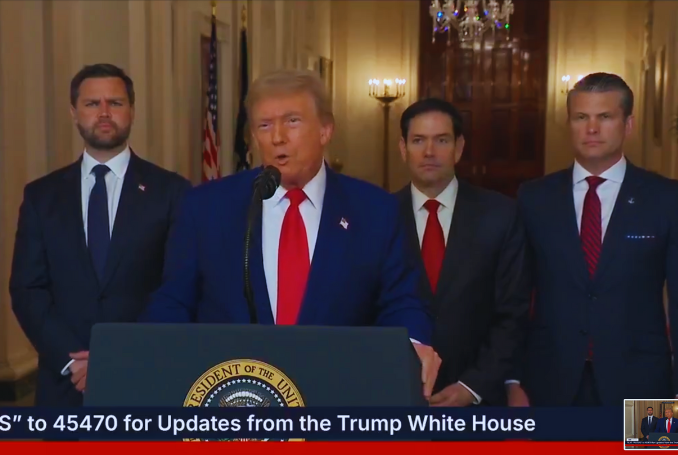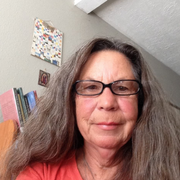
By Benay Blend
As journalist Ramzy Baroud makes clear, Netanyahu’s self-described “mission” extends beyond that of “defeating Hamas,” to include “changing the face of the Middle East”.
On June 29, 2025, Iyad Burnat, a Palestinian peace activist, returned to Albuquerque to deliver another talk about conditions on the West Bank, this time focusing on his sons’ incarcerations along with Zionist attacks on his village of Bil’in.
His words are important, not only because they speak to the sumud of Palestinians like Iyad, but also make clear that the ethnic cleansing of his people started as early as 1948 with the creation of the state of Israel.
In so doing, he placed the entity squarely within a global era of imperialism and colonization, a format that provides a regional perspective that includes Iran. Accordingly, by keeping this in mind, it became possible to shift the focus to Iran during the brief US/Israeli bombardment of its territory without ignoring the entity’s escalation of attacks on Palestine.
Most of Iyad’s talk centered on the plight of two of his sons who are suffering mental and physical impairment due to their time in “Israeli” prisons. Nevertheless, he brought up several other issues that are pertinent to the question of Iran.
Addressing the role of internationals in the movement, he stressed the importance of sharing Palestinian voices on social media. While Western media provided cover for Israel to escalate violence against Gaza as well as the West Bank, other sources didn’t.
For example, more credible media, such as The Palestine Chronicle, Electronic Intifada, Al Mayadeen, and Mondoweiss, continued to cover ‘Israel’s” heightened aggression against Gaza as well as the West Bank.
Indeed, Iyad elaborated on the ways that the entity employed the war against Iran to institute a lockdown of villages, including his own, on the West Bank.
Indeed, various sources, including those listed above, continued coverage of the Gaza genocide and heightened “security” measures on the West Bank while also providing news from the entity’s war on Iran.
For example, writing for Palestine Chronicle, Fayha Shalah notes that newly installed barriers on West Bank villages have hindered Palestinians’ freedom of movement, thereby impacting their traveling to work, universities, and shops.
Palestinian-led organizations, such as Masar Badil—Palestinian Alternative Revolutionary Path, urge a regional approach to Palestinian liberation. Following in the footsteps of the late revolutionary journalist Ghassan Kanafani, who advocated an intersectional approach, the Masar urged its readers to “draw inspiration from the Yemeni revolutionary model in mobilizing popular power and mass action that stands alongside their armed forces and resistance operations.”
“Victory over the Zionist-US enemy cannot be achieved without a popular movement extending from Saada to Baghdad, from the Dahiyeh to Gaza, and from Tehran to Tunis,” concludes the Masar. “The battle of Gaza is our battle, and the battle of the entire nation. Any delay in expanding the arenas of popular action and resistance will only serve the enemy and its agents.”
In his seminal work on settler colonialism, Professor Illan Pappė provides a means to draw connections between imperialists’ targets such as Gaza and Iran. In doing so, he gives the chant “globalize the intifada” new meaning.
Using this formula, it is possible to draw ties between Palestine and other settler colonial projects. Although Iran is not colony of any state, it is their very independence from the West that imperialists continue to challenge up to the present day.
As journalist Ramzy Baroud makes clear, Netanyahu’s self-described “mission” extends beyond that of “defeating Hamas,” to include “changing the face of the Middle East,” which necessitated the bombing of Yemen and Iran, both countries that have historically supported Palestine.
Race and the Question of Palestine (2025), a new collection edited by Lana Tatour and Ronit Lentin, places Palestine within a global paradigm that argues for race as the connecting factor. In doing so, the editors and their contributors to this volume offer a useful methodology for understanding the links between “Israel’s” ethnic cleansing of Palestine and other colonial projects around the world.
In the introduction, Tatour explains how a focus on race “situates Palestine within the global histories, legacies and present politics of imperialism, colonialism and settler colonialism, capitalism, and heteropatriarchy” (p.6). This practice, she argues, counters the “exceptionalism” (p. 6) of the Palestinian cause as well as concepts of race as a static category that depend on terms of skin color, identity, ethnicity and culture.
As evidenced by the broad range of topics covered in the book, chapters that focus on Zionism as racism, Black-Palestinian solidarity and proletarianization of the Mizrahim, the contributors provide a foundation for focus on a peripheral issue without losing sight of the Palestinian struggle for liberation.
Indeed, Tatour argues that Palestinians have always claimed that colonialism is also racial and racist (P. 12). When Palestinians speak of the racism embedded in Zionism, they locate their own experience in relation to that of Black Americans, Native Americans and colonized peoples in the Americas, Asia and Africa (P. 13).
This not only promotes solidarity among 3rd and 4th world countries; it also provides a wider range of allies in an era of increasing repression of pro-Palestinian organizing around the world.
For example, British lawmakers recently voted to ban the activist group Palestine Action, a UK-based organization that employs direct action to end all complicity with “Israel’s” genocide on Gaza. A court challenge will be heard on July 4 before the ban can go into effect.
This type of repression also applies to groups such as Samidoun—Palestinian Prisoner Solidarity Network, which was listed as a “Specially Designated Global Terrorist” in October 2024 by a Democratic Administration in the United States and as a “terrorist entity” in Canada. Both designations were administered by alleged liberal administrations.
Under the banner, “We are all Palestine Action,” protests are being organized at key government spots in Great Britain.
Solidarity requires standing behind these designated targets, despite the risks involved. As the Samidoun leadership warns, it is often true in these cases that “large NGOs or liberal organizations” have spent too much time isolating designated groups “in the belief that such isolation provides [their own group] with some form of protection from further repression.”
“If we do not rally, even with associated risks, we encourage the state to escalate its attacks,” the statement cautions.
“History teaches the importance of rejecting such proscriptions,” particularly those “against Samdoun, against Addameer, against Palestinian and Arab charity organizations, and against the resistance organizations leading the liberation struggle, including Hamas, Islamic Jihad, the PFLP, Hezbollah, Ansarallah and other movements.”
Viewing Palestine as part of a colonized global whole helps place the case within a context while providing a broader range of allies against repression. Thus, when Israel attacks other regional spaces, such as Iran, it is possible to turn attention to that aggression without losing sight of Gaza, which, through this process, is linked to all global struggles wherever they might be.
Such a perspective also provides a broader range of allies when more cautious factions attempt to distance themselves from what they perceive as dangerous political alliances.
Moreover, Pappė, Tatour, Lentin, and many others provide an organic methodology that arises from praxis, and not the other way around. As such, it conforms to Edward Said’s belief that theory is always worldly in that it is tied to the real world of the oppressed (The World, the Text, and the Critic, 1983, p. 4).
During the question-and-answer period of Iyad’s talk, a woman in the audience expressed frustration that the Palestinian struggle as she saw it was not tied enough to the African (Black) struggle in this country.
Actually, that is not the case, but perhaps a greater effort to share this information on social media, as Iyad has suggested, as well as churches, community outreach, etc. might bring more people into the struggle for global freedom.

– Benay Blend earned her doctorate in American Studies from the University of New Mexico. Her scholarly works include Douglas Vakoch and Sam Mickey, Eds. (2017), “’Neither Homeland Nor Exile are Words’: ‘Situated Knowledge’ in the Works of Palestinian and Native American Writers”. She contributed this article to The Palestine Chronicle.
(Except for the headline, this story has not been edited by PostX News and is published from a syndicated feed.)
